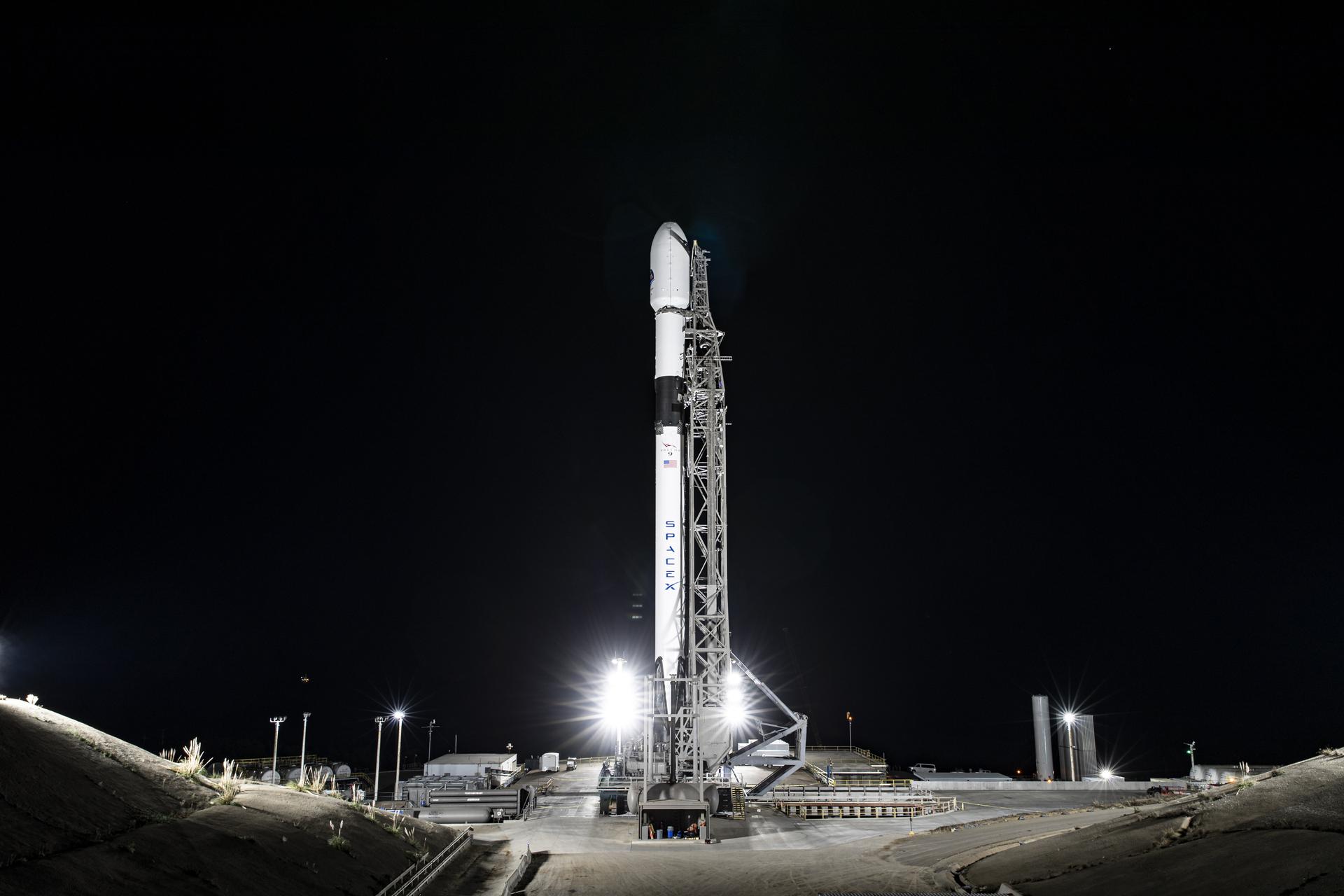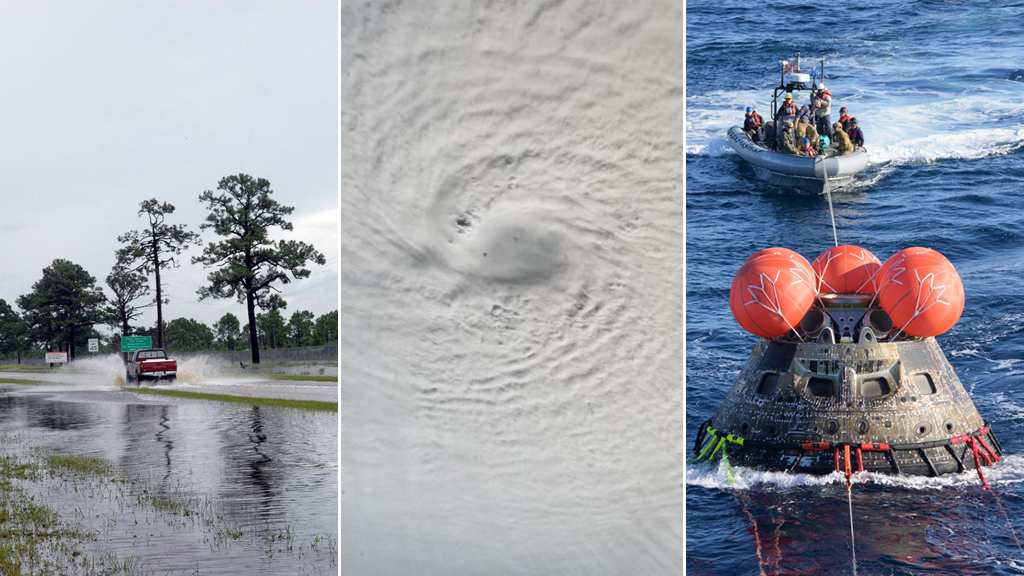Joint American Geophysical Union/California Institute of Technology/ New Jersey Institute of Technology Release
Contact:
Harvey Leifert, (202) 777-7507, hleifert@agu.org
Caltech Contact:
Robert Tindol, (626) 395-3631, tindol@caltech.edu
NJIT Contact:
Sheryl Weinstein, (973) 596-3436, sheryl.m.weinstein@njit.edu
AGU RELEASE NO. 01-13
WASHINGTON - Scientists have revived and modernized a nearly forgotten technique for monitoring Earth's climate by carefully observing "earthshine," the ghostly glow of the dark side of the moon. Earthshine measurements are a useful complement to satellite observations for determining Earth's reflectance of sunlight, an important climate parameter. Long-term observations of earthshine thus monitor variations in cloud cover and atmospheric particles known as aerosols that play a role in climate change.
Earthshine is readily visible to the naked eye, most easily during a crescent moon. Leonardo da Vinci first explained the phenomenon, in which the moon acts as a giant mirror, showing the sunlight reflected from Earth. The brightness of the earthshine thus measures the reflectance of Earth.
In May 1 issue of the journal, Geophysical Research Letters, published by the American Geophysical Union, a team of scientists from the New Jersey Institute of Technology and the California Institute of Technology report that Earth's albedo, the fraction of sunlight it reflects, is currently 0.297, with a margin of error of 0.005.
"Earth's climate is driven by the net sunlight that it absorbs," says Philip R. Goode, leader of the New Jersey Institute of Technology team, Director of the Big Bear Solar Observatory, and a Distinguished Professor of Physics at NJIT. "We have found surprisingly large -- up to 20 percent -- seasonal variations in Earth's reflectance. Further, we have found a hint of a 2.5-percent decrease in Earth's albedo over the past five years." If Earth reflected even one percent less light, the effect would be significant enough to be a concern with regard to global warming.
In the early 20th century, the French astronomer Andr=E9-Louis Danjon undertook the first quantitative observations of earthshine. But the method lay dormant for nearly 50 years, until Caltech professor Steven E. Koonin described its modern potential in a 1991 paper. The newly published data are the first that are precise and systematic enough to infer the relative health of Earth's climate.
Koonin notes that "studies of climate change require well-calibrated, long-term measurements of large regions of the globe. Earthshine observations are ideally suited to this, because, in contrast to satellite determinations of the albedo, they are self-calibrating, easily and inexpensively performed from the ground, and instantaneously cover a significant fraction of the globe."
The new albedo measurements are based on about 200 nights of observations of the dark side of the moon at regular intervals over a recent two-year period, and another 70 nights during 1994-95. Using a six-inch refractor telescope and precise charge coupled devices at the Big Bear Solar Observatory, the researchers measure the intensity of the earthshine.
By simultaneously observing the bright "moonshine" from the crescent, they compensate for the effects of atmospheric scattering. The data are best collected one week before and one week after the new moon, when less than half of the lunar disk is illuminated by the sun. When local cloud cover is also taken into account, Earth's reflectance can be determined on about one-quarter of the nights.
The study relies on averages over long periods, because the albedo changes substantially from night to night with changing weather, and even more dramatically from season to season with changing snow and ice cover. The location of land masses also affect the albedo as Earth rotates on its axis.
For example, the observations from California easily detect a brightening of earthshine during the night as the sun rises over Asia, because the huge continental land mass reflects more light than the Pacific Ocean. "Thus, the averaging of lots of data is necessary for an accurate indication of a changing albedo," Goode says.
It is significant that earthshine data suggest that the albedo has decreased slightly during the past five years, as the Sun's magnetic activity has climbed from solar minimum to maximum during that time. This supports the hypothesis that the Sun's magnetic field plays an indirect role in Earth's climate. If supported by further observations, it would explain why there seem to be so many signatures of the Sun's 11-year activity cycle in Earth's climate record, although the associated variations in the Sun's brightness are too weak to have an effect.
The researchers plan to continue observations from the Big Bear observatory. "These, supplemented with additional observations from a planned worldwide network, will allow even more precise, round-the-clock monitoring of the earth's reflectance," Goode says. "That precision will also make it possible to test connections between solar activity and Earth's climate."
"It's really amazing, if you think about it," Koonin says, "that you can look at this ghostly reflection on the Moon and measure what Earth's climate is doing."
The study was funded by both NASA, beginning in 1998, and the Western Center for Global Environmental Change, during 1994-95. In addition to Goode, members of the NJIT team were Jiong Qiu, Vasyl Yurchyshyn, and Jeff Hickey. Members of the Caltech team, in addition to Koonin, were C. Titus Brown, Edwin Kolbe (now at the University of Basel), and Ming Chu (now at the Chinese University of Hong Kong).
Notes for journalists:
The paper, P.R. Goode, J. Qui, V. Yurchyshyn, J. Hickey, M-C. Chu, E. Kolbe, C.T. Brown, and S.E. Koonin, "Earthshine Observations of the Earth's Reflectance," will appear in Geophysical Research Letters, Vol. 28, no. 9 (May 1, 2001), pages 1,671-1,674. A copy may be ordered from Harvey Leifert, hleifert@agu.org . Please indicate whether you prefer PDF or fax and provide your contact information.
Dr. Goode (pronounced "good'-ee") may be reached by email at philip.r.goode@njit.edu or by phone, as follows:
- Through April 26 -- (909) 866-5791 x20
- April 28-30 -- (973) 596-3565 (work)
- May 2 onward -- (909) 866-5791 x20




































